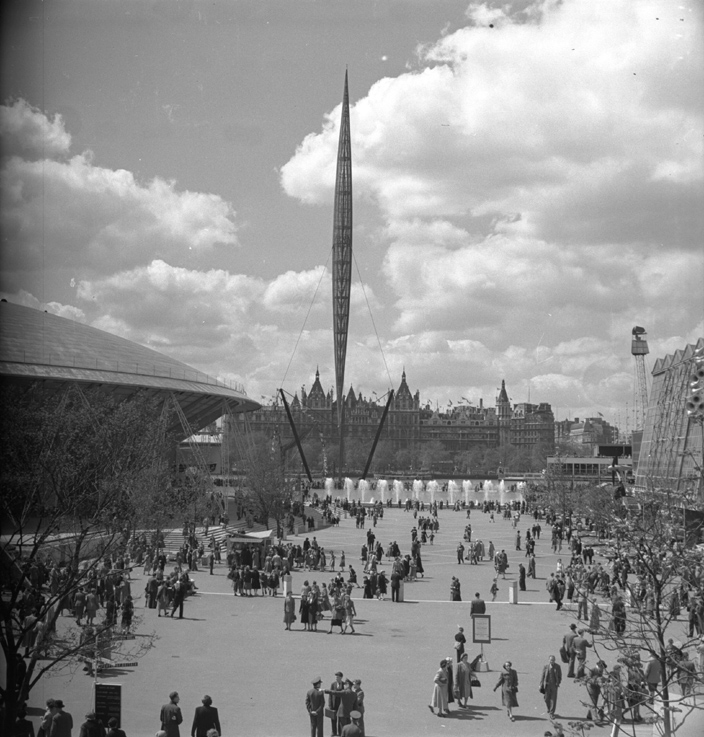Tensegrity structural systems
Tensegrity is a structural design principle that applies to a structure which can be stabilised entirely by internal pre-stress. This pre-stress is created by a discontinuous set of compression elements being opposed and balanced by a continuous tensile force.
In essence, a net of continuous tension cables or tendons (the tensioned elements), hold in place, and are themesleves held in place by, a series of discontinous bars or struts (the compressed elements).
The pioneering architect Buckminster Fuller coined the term tensegrity in the 1960s, as a combination of ‘tensional integrity’. However, the American sculptor Kenneth Snelson has long-claimed that Fuller took credit for his original idea of ‘floating compression’. Snelson defines tensegrity as follows:
| ‘Tensegrity describes a closed structural system composed of a set of three or more elongate compression struts within a network of tension tendons, the combined parts (are) mutually supportive in such a way that the struts do not touch one another, but press outwardly against nodal points in the tension network to form a firm, triangulated, prestressed, tension and compression unit.’ |
This combination of balanced elements produces an exceptionally rigid structure made up of members that do not experience bending moments. Members are loaded only in pure compression or pure tension, and will fail only if cables yield or rods buckle.
A famous example of a tensegrity structure was the Skylon, exhibited at the Festival of Britain in 1951 [see top image]. The tower was held in position by six cables, three of which were at the bottom and determined its location, while the other three were at the top and maintained its verticality.
One of the first uses of tensegrity in architecture was Spodek, an entertainment venue in Poland, designed by architects Maciej Gintowt and Maciej Krasiski in the 1960s. The roof was an inclined surface, the circumference of which was held up by a system of cables.
[edit] Related articles on Designing Buildings
Featured articles and news
Infrastructure that connect the physical and digital domains.
Harnessing robotics and AI in challenging environments
The key to nuclear decommissioning and fusion engineering.
BSRIA announces Lisa Ashworth as new CEO
Tasked with furthering BSRIA’s impressive growth ambitions.
Public buildings get half a million energy efficiency boost
£557 million to switch to cleaner heating and save on energy.
CIOB launches pre-election manifesto
Outlining potential future policies for the next government.
Grenfell Tower Inquiry announcement
Phase 2 hearings come to a close and the final report due in September.
Progress from Parts L, F and O: A whitepaper, one year on.
A replicated study to understand the opinion of practitioners.
ECA announces new president 2024
Electrical engineer and business leader Stuart Smith.
A distinct type of countryside that should be celebrated.
Should Part O be extended to existing buildings?
EAC brands heatwave adaptation a missed opportunity.
Definition of Statutory in workplace and facilities management
Established by IWFM, BESA, CIBSE and BSRIA.
Tackling the transition from traditional heating systems
59% lack the necessary information and confidence to switch.
The general election and the construction industry
As PM, Rishi Sunak announces July 4 date for an election.
Eco apprenticeships continue help grow green workforce
A year after being recognised at the King's coronation.
Permitted development rights for agricultural buildings
The changes coming into effect as of May 21, 2024.






















